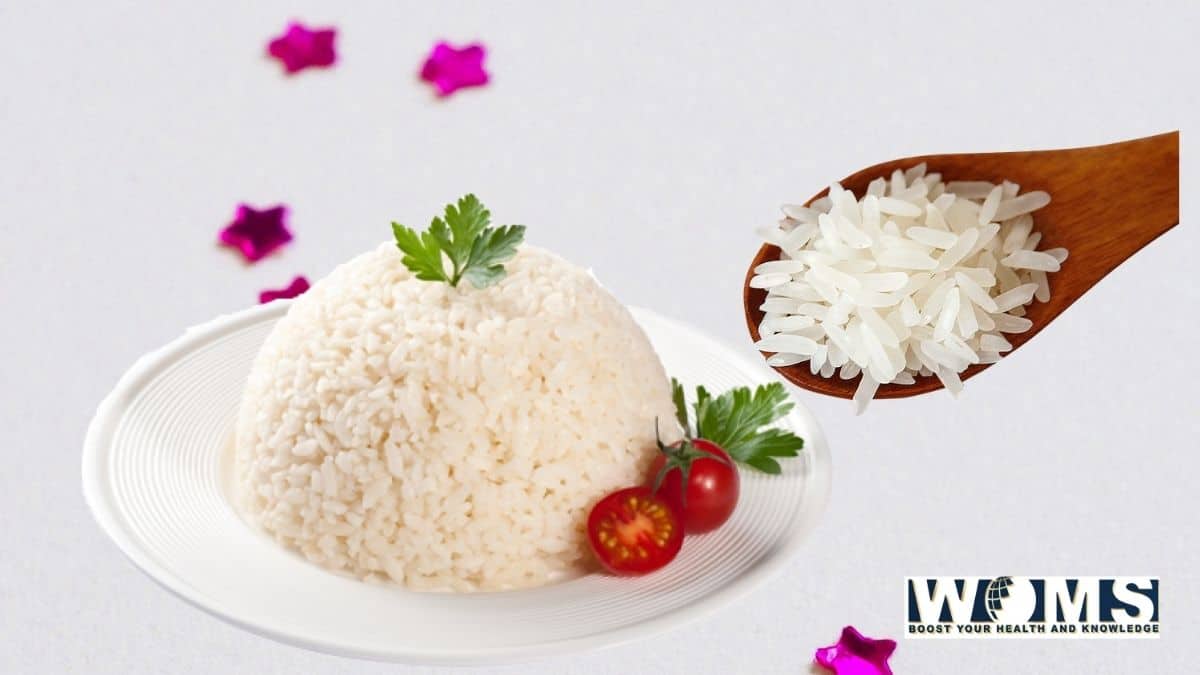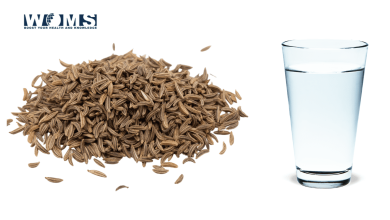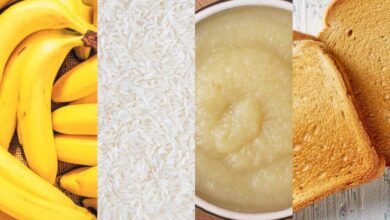Jasmine Rice Nutrition

Rice is a well-known and leading source of nutrition in over 100 countries around the world. It is generally served with many appetizing dishes, mainly in the South, Southeast, and East Asian regions. Jasmine rice is also known as “Thai fragrant rice.” It is a long-grain rice with a grain length of four times its width. Jasmine rice nutrition is comparatively easy to consume because it has an aromatic fragrance and floral flavor, so people consume it worldwide.
Thai rice comes in a variety of colors. White jasmine rice is primarily processed. Brown, purple, red, and black varieties are also available. Read about the nutritional information printed on the packet before cooking any of these rice since different variants contain different nutritional statuses.
Jasmine rice nutrition can serve as an excellent nutritional source when added to the diet but watch out for risk factors.
History of Jasmine Rice
Jasmine rice does not date back to ancient times. In fact, it was first bred in Thailand in the 1950s. Quickly, jasmine rice nutrition became popular around the world due to its superior quality and aromatic fragrance. Now, it is distributed across the globe.
It is called jasmine rice due to its aromatic odour resembling the flower jasmine.
Jasmine Rice Nutrition Facts
One cup serving of jasmine rice nutrition includes:
- Carbohydrates: 50 grams
- Proteins: 5 grams
- Fat: 2 gram
- Cholesterol: 0 gram
- Fiber: 3 grams
- Sodium: 394 mg
- Sugar: 0 grams
The caloric count of one cup of brown jasmine rice is 238 grams. Jasmine rice nutrition also contains specific vitamins and minerals such as:
- Vitamin B1 (thiamine)
- Vitamin B6 (pyridoxine)
- Selenium 11 mcg
- Phosphorus 199 mg
- Magnesium 76 mg
- Potassium 168 mg
- Zinc 2 mg
Is Jasmine rice nutrition healthy?
Jasmine rice is beneficial to the overall health of the body. Because rice is a staple food in many countries worldwide, scientists and nutritionists have researched a lot about the nutritional status of a variety of rice. The health benefits of jasmine rice nutrition are as follows:
1. Boosts the immune response:
Different varieties of jasmine rice, including the red, purple, black, and brown ones, contain a nutrient called phytonutrient. The jasmine rice nutrition helps shield your body’s healthy cells. In this way, it improves the immune response and strengthens the immune system.
2. Beneficial for the digestive system
The fiber content of jasmine rice is considerable, i.e., 4 grams in ½ cup serving of brown jasmine rice. Because brown jasmine rice is not processed, the fiber content is high compared to white jasmine rice. The high fiber content of jasmine rice nutrition improves bowel movements and overall digestive health.
3. A great source of iron
Jasmine rice nutrition is a great source of iron. One cup serving of jasmine rice contains 1.1 mg of iron which meets the 14% iron requirement for men and 6% iron requirement for women. Iron plays a vital role in oxygen supply across the body’s tissues and cells and is essential for their proper functioning in brief.
4. A healthy alternative for bones, muscles, and nerves
The magnesium in jasmine rice helps in proper bone and muscle development by increased synthesis of DNA. Magnesium also helps in proper nerve conduction and muscle contraction
5. Decrease incidence of heart disease
Whole grains, mainly brown jasmine rice, are beneficial in preventing the incidence of cardiovascular diseases. Jasmine rice nutrition also proves useful in heart patients.
6. A quick source of energy
The carbohydrate content in jasmine rice nutrition is high (i.e., 50 grams carbohydrates per cup serving of jasmine rice), and it proves as a quick source of energy.
Potential health risks of jasmine rice
Nevertheless, there are a few potential health risks associated with the use of jasmine rice. Risk factors of jasmine rice nutrition include:
1. Elevated blood sugar levels
Nutritionists place jasmine rice at a high glycemic index. So, they can elevate blood sugar levels and prove risky for diabetes mellitus type II patients.
2. A build-up of arsenic levels
Since jasmine rice and other rice grow in water-flooded fields, the levels of arsenic start to build up rapidly in the grains. Arsenic is generally present in soil and water and is a toxic heavy metal. The levels of arsenic are higher in rice than in any other type of grains. Elevated arsenic levels in jasmine rice nutrition can be hazardous for children.
Other toxic heavy metals such as lead, cadmium, and mercury can also contaminate rice.
Wash the rice before cooking to lessen the amount of arsenic in your rice.
Jasmine rice vs White rice
These two types of rice are somewhat similar but have notable differences.
White rice is generally processed, which washes off the outer layers, i.e., hard protective shell, outer layer, and inner core. Processing the rice also washes off fiber and other essential nutrients.
A comparison of the nutritional status of the two types of rice can help to get a vague idea about the differences. The following table compares the nutritional values of ½ cup of jasmine rice and long-grain white rice:
| Nutrition | Jasmine rice | Long-grain white rice |
| Calories | 92 grams | 90 grams |
| Carbohydrates | 70 grams | 18 grams |
| Proteins | 6 grams | 4 grams |
| Fats | 2 grams | 0 grams |
| Fiber | 4 grams | 1 gram |
| Iron | 2% of the DV (daily value) | 0% of the DV |
| Calcium | 2% of the DV | 2% of the DV |
Nutrients such as niacin, thiamine, iron, and folate are added to white rice from external sources due to loss of minerals during processing.
In spite of the fact that white rice contains lower amounts of fat and a moderate amount of protein, white rice boosts up the glycemic index and can be health hazardous to diabetic patients. Thus, it is best to eat white rice occasionally.
White jasmine rice vs Brown rice
Brown rice is not processed and consequently is not washed off fiber and important minerals. The hulling process removes only the outer protective, and the other layers remain intact.

Which one is healthier?
Since the processing mechanism removes essential nutrients and fiber, both the white rice and white jasmine rice are nutritionally equivalent. Both of them are easily digested by your body, causing an increase in blood sugar levels. Moreover, patients of type II diabetes mellitus may observe regulated blood sugar levels when switching from white to brown jasmine rice nutrition. Your body does not digest the brown rice easily, and thus, a spike in blood sugar levels is not evident.
Brown rice also contains nutrients called phytonutrients. These nutrients are beneficial for both your heart and immune system health.
In addition to this, if you are more into losing or maintain a healthy weight, go for brown jasmine rice. Eating foods higher in fiber content can help reach satiety, and thus, it helps consume less food and this prevents overeating.
Thus, brown rice is healthier and is a better alternative to coloured varieties or white jasmine rice.
Storage of Jasmine rice
Cooked jasmine rice
Store the jasmine rice in the refrigerator and consume it within three to four days. If it leaves a foul smell or seems unpleasant to smell, do not consume the rice.
Uncooked jasmine rice
Place them in an airtight container. Store the container in a cool and dry place. You can also store them in a refrigerator where they will last for about one year.
How to prepare them?
Generally, people rinse the raw rice before cooking to remove any dirt, dust, or insects on or within the rice.
For cooking them, the general rule is one and a half cup water for one cup rice. One cup of uncooked rice usually yields four to five cups of cooked rice.
You can use the rice as a whole meal or as a side dish to serve it with curries, soups, stews, and salads.
Frequently asked questions
What is meant by jasmine rice calories?
Jasmine rice calories mean the number of calories obtained by eating jasmine rice. One cup serving of jasmine rice contains 320 calories.
What are the potential risk factors associated with jasmine rice nutrition?
Jasmine rice nutrition involves potential health risks besides several benefits. Unprocessed white jasmine rice increases blood sugar levels which can be dangerous for diabetic patients. Moreover, jasmine rice contains a higher value of arsenic in them which is a toxic heavy metal. Arsenic can prove to be hazardous, especially for children.
Should I choose white jasmine rice or brown jasmine rice?
Brown jasmine rice is more beneficial as compared to white jasmine rice nutrition. This is because brown jasmine rice is not stripped of the essential nutrients and fiber during the hulling process. At the same time, white jasmine rice contains a lower amount of fiber.
Patients of type II diabetes mellitus may observe regulated blood sugar levels when switching from white to brown jasmine rice nutrition. Your body does not digest the brown rice easily, and thus, a spike in blood sugar levels is not evident. Brown rice also contains nutrients called phytonutrients. These nutrients are beneficial for both your heart and immune system health. In addition to this, if you are more into losing or maintaining a healthy weight, go for brown jasmine rice. Eating foods higher in fiber content can help in reaching satiety, and thus, it helps to consume less food and it prevents overeating.
What’s the healthiest type of rice?
Jasmine rice can be regarded as one of the healthiest types of nutrition. It contains a very low amount of fat and cholesterol and a moderate amount of protein. Iron content is high, and it meets the 14% daily requirement of iron in men, whereas 6% of daily iron requirement in women. Moreover, fiber content is high in brown rice, which improves the digestive system’s function and promotes peristalsis.
How can high-fiber jasmine rice be beneficial to health?
High-fiber rice, i.e., brown jasmine rice, can help improve digestive function. Moreover, it can help regulate and maintain weight because high-fiber foods can induce satiety rapidly. This gives a sense of fullness and prevents overeating.
How should I store Jasmine rice?
For cooked jasmine rice, store it in the refrigerator and consume it within three to four days. If it leaves a bad smell or seems unpleasant to smell, do not consume the rice.
For uncooked jasmine rice, place them in an airtight container. Store the container in a cool and dry place. You can also store them in a refrigerator where they will last for about one year.
Why is white jasmine rice not preferable?
White jasmine rice has a high glycemic index and can strike high blood sugar levels, proving dangerous, especially to diabetic patients. Moreover, white jasmine rice is stripped of essential nutrients, and fiber content is low too. This happens during the hulling process, where these rice are made to pass through a machine that removes the outer protective shell and inner core of the rice.
How does jasmine rice help to improve immune system response?
Different varieties of jasmine rice, including the red, purple, black, and brown ones, contain a nutrient called phytonutrient. This nutrient helps shield your body’s healthy cells. In this way, it improves the immune response and strengthens the immune system.
Is jasmine rice inflammatory?
No, jasmine rice is not inflammatory. In fact, it has anti-inflammatory and antioxidant properties.
Is jasmine rice nutrition good for your liver?
Brown jasmine rice may protect against fatty liver disease. The high fiber levels in brown jasmine rice help your liver work at an optimal level and function better.




